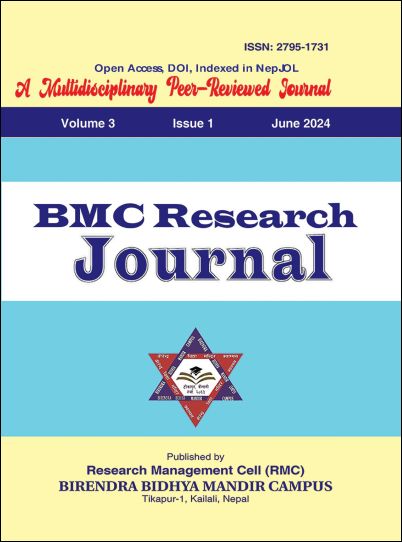Translating Inter-country Adoption as Transcultural Communication
DOI:
https://doi.org/10.3126/bmcrj.v3i1.69270Keywords:
Code, translation, equivalence, culture, inter-country adoptionAbstract
This article attempts to explore transcultural communication through the translated version of “Inter-country Adoption” of the National Civil Code, 2017 ( the Muluki Dewani Samhita) Ain, 2074 BS). It observes the “Hague Adoption Convention, 1993” principles and the Manu’s idea of dharmaputra (adopted sob) mentioned in the “Manusmriti”, the law of Hindu, and its influence on the formation of adoption law in Nepal. The primary purpose of Nepali legal translation is to transfer Nepali legal culture for global communication. The cultural theory of translation developed by Lawrence Venuti and Marry Snell-Hornby and the equivalence theory of Eugene Nida and Peter Newmark are were used as the theoretical base for the study. The significance of this study is to the parents waiting for inter-country adoption and to the university students who have taken translation studies as their major subject. This article concludes that legal translation in Nepal is a strategy to deliver Nepali legal culture to the globe and vice versa.
Downloads
Downloads
Published
How to Cite
Issue
Section
License
Copyright (c) 2024 The Author(s)

This work is licensed under a Creative Commons Attribution-NonCommercial 4.0 International License.
This license enables reusers to distribute, remix, adapt, and build upon the material in any medium or format for noncommercial purposes only, and only so long as attribution is given to the creator.




